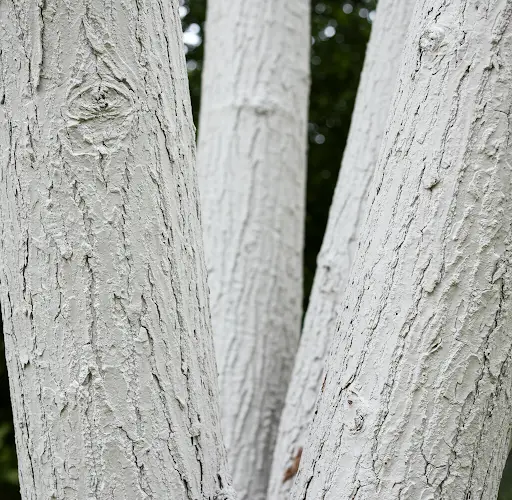Essential Autumn Care for Fruit Trees: Protecting Against Frost, Pests, and Disease
As autumn sets in, it’s time to turn our attention to caring for fruit trees. The months of October and November are critical for preparing trees to withstand the harsh winter ahead. Proper seasonal care can make the difference between a healthy, productive tree in spring and one that struggles due to frost damage, disease, or pest infestation.
Winter may seem like a dormant time in the garden, but what you do in the fall lays the groundwork for strong spring growth and a bountiful harvest. This guide covers the key steps to take before the first frost hits, and includes a natural protective spray recipe to help shield your trees through the coldest months.
Why Autumn Protection Is Crucial
When temperatures drop, fruit trees become vulnerable to several stressors:
-
Frost damage: Sudden temperature shifts can cause cracks in the bark, known as frost cracks, which open a pathway for disease and pests.
-
Fungal diseases: Damp, decaying organic matter and unprotected wounds on the tree can serve as breeding grounds for fungal infections.
-
Pest invasions: Insects often seek shelter in tree bark and surrounding soil, overwintering there to emerge in spring and cause damage.
Fortunately, with a few proactive steps, you can safeguard your trees from these threats.
Step 1: Clean the Ground Around the Trees
One of the simplest but most important tasks is clearing away fallen leaves and fruit from beneath the trees. This debris may harbor insect eggs, fungal spores, or bacteria that could infect the tree later on. Removing them reduces the chance of disease and discourages pests from settling in for the winter.
Dispose of this material away from the orchard, or better yet, compost it if it’s disease-free.
Step 2: Apply a Lime Wash to the Trunks
Whitewashing or liming the trunks of fruit trees is an age-old method with multiple benefits. This protective coating helps reflect sunlight during warm winter days, preventing sudden temperature changes that can lead to bark splitting.
In addition, lime wash serves as a deterrent to certain pests and fungi. Applying it in autumn can help minimize pest infestations and fungal infections through the colder months.
A basic lime wash can be made using hydrated lime, water, and a small amount of clay or glue to help the mixture adhere to the bark. Apply with a brush, covering the lower part of the trunk and main branches.
Step 3: Mulch Around the Base of Trees
Mulching is another essential step in protecting trees during winter. A layer of organic mulch—such as straw, wood chips, or leaf mold—acts as an insulator. It helps the soil retain heat, keeping the root zone from freezing during sudden cold snaps.
Mulch also suppresses weed growth and conserves moisture in the soil, which is vital in dry winter conditions. Apply a thick layer (5–10 cm) around the base of each tree, but be careful not to pile it directly against the trunk to avoid rot.
Step 4: Use a Natural Protective Spray
In addition to cleaning, whitewashing, and mulching, a homemade organic spray can offer an extra layer of defense against disease and pests.
Ingredients:
-
5 liters of water
-
200 ml of milk
-
3 cloves of garlic (crushed or minced)
Instructions:
-
Mix the water, milk, and garlic thoroughly.
-
Let the mixture steep for an hour so the garlic can infuse into the solution.
-
Strain (optional) and pour into a spray bottle or garden sprayer.
-
Apply the mixture to the trunks and branches of your fruit trees before the first frost.
Milk acts as a natural fungicide, helping to prevent mold and mildew. Garlic has strong insect-repelling properties, warding off overwintering pests such as aphids, borers, and mites. This gentle, chemical-free approach offers added protection without harming the environment or beneficial insects.
Final Thoughts
Autumn preparation is one of the most important investments you can make in your fruit trees. By taking time to clean up debris, apply a lime wash, mulch the base, and spray with a natural solution, you’re helping your trees survive winter in peak condition.
These simple steps support the health of your orchard and ensure that when spring arrives, your trees will be ready to burst into bloom, free from disease and pest damage. Whether you’re tending apples, pears, plums, or cherries, giving your trees this seasonal care sets the stage for a thriving and fruitful year ahead.



